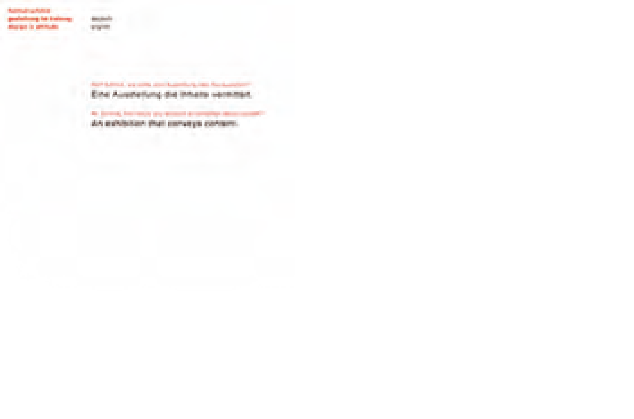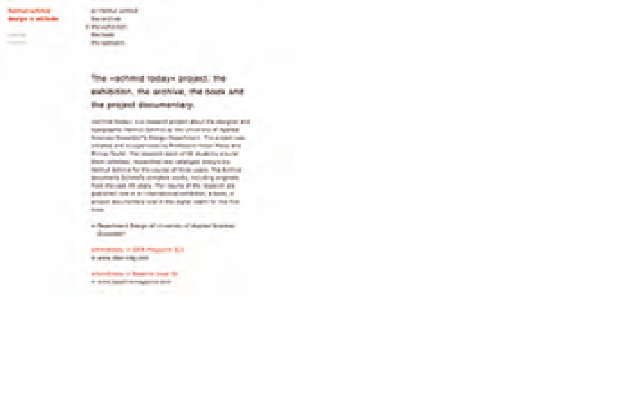Graphics Reference
In-Depth Information
CASE STUDY
Helmut Schmid: Design is Attitude
Design of website: Students in the course
SchmidToday, under Victor Malsy and
PhilippTeufel, professors at Fachhochschule,
Düsseldorf
The Helmut Schmid: Design is Attitude site
(Fig.
8-35
) reflects the results of the “Schmid
Today” project, a three-year research project
about the designer and typographer Helmut
Schmid. The results of the project are an
international exhibition; a book,
Design Is
Attitude
; a documentary; and this website.
Schmid's prodigious work and career spans
forty years.
After training as a typesetter, Schmid (b.
1942 in Ferlach, Austria) studied at the Basel
School of Design under Emil Ruder, Kurt
Hauert, and Robert Buchler.
The website reflects the essence of
Schmid's typographical work: an integration
of clarity, functionality, and visual poetry.
The Dutch designer Wim Crouwel has
said, “Helmut Schmid … his typography
has rhythm … it is created by the eye and
resembles a musical score.”
After selecting a preferred language on
the intro page, visitors enter the home page
(Fig.
8-36
) containing links to five content
areas: on Helmut Schmid (Fig.
8-37
), the
archive, the exhibition, the topic, and the
sponsors.
This website is arranged as a simple tree
structure, enabling visitors to further select
options within subcategories.
After clicking on the archive, a random
thumbnail collection of works from the archive
emerges. From a submenu, viewers can select
work displayed as lists of thumbnails from
more specific categories, including medium,
year, client, and collection. Clicking on specific
thumbnails displays a larger image of the
subject (Fig.
8-38)
.
Text at the left of the page reveals facts
about the object: title, object number, year,
medium, format, color, and client. In the case
of multicomponent designs, such as topics,
users can scroll through a representative
selection of spreads and parts (Fig.
8-39
).
Clicking on Search enables viewers
to scroll through thumbnails of the entire
collection (nearly five hundred images)
presented in chronological order (Fig.
8-40
).
8-35
8-36




